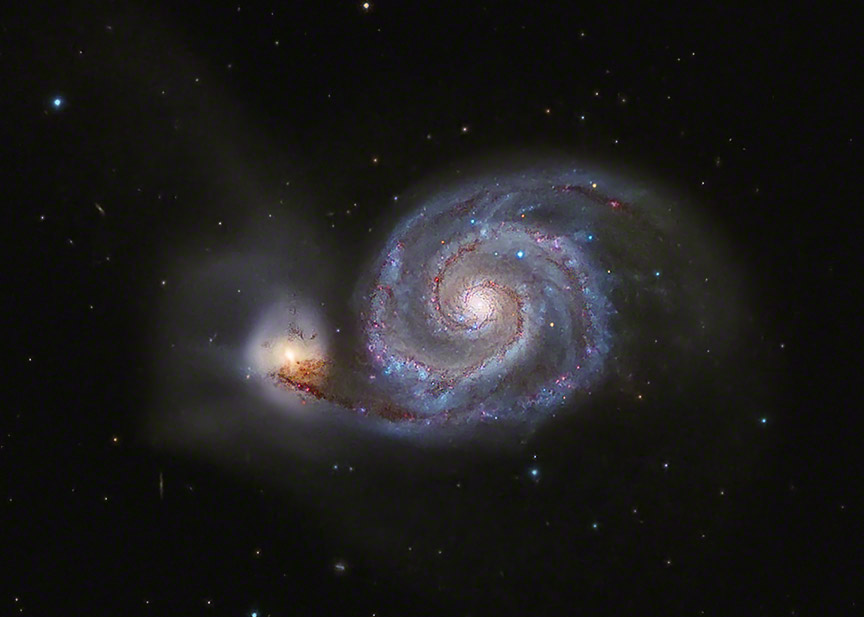

| 
|

The strong spiral character of the Whirlpool Galaxy, M51 (on the right), is thought to be due to its interaction with its companion galaxy, NGC 5195 (on the left). Dynamic modeling suggests that NGC 5195 passed through M51 twice in the distant past. When galaxies "collide", the interaction is primarily gravitational; there is so much space between the stars in the galaxies that virtually none of them actually hit each other. The interaction scattered stars into a faint halo around the galaxies and stimulated star formation in M51's spiral arms, producing many young blue stars. The stars heated neighboring clouds of hydrogen gas causing those clouds to emit red light, as can be seen scattered along the spiral arms.
Both galaxies are about 31 million light-years away in the constellation Canes Venatici, seen just below the end of the Big Dipper's handle. Several other galaxies appear faintly in the background, well beyond these two.
Compare M51 with other spiral galaxies: the Pinwheel Galaxy M101, the Triangulum Galaxy M33, and Bode's Galaxy M81.
120 minutes L and 146 minutes RGB starting on 2012-05-18 and 2012-05-19 using a QSI 583 from northern New Jersey through an Astro-Physics 155mm refractor at f7.1. North is to the left. ©2012
| |||||||||||||||||
|
Astrophotography Books – Astronomy Books |








